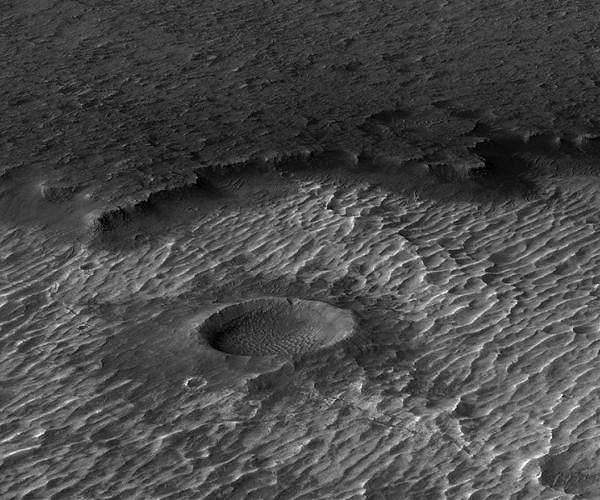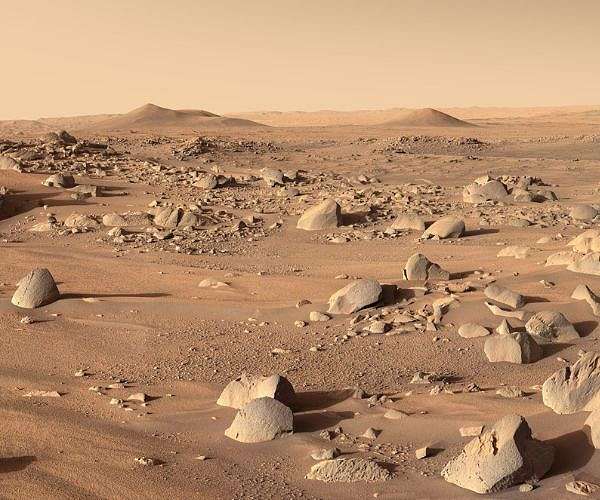*
Martian rocks shed light on planet’s ancient climate
by Clarence Oxford
Los Angeles CA (SPX) Sep 26, 2024
Mars’ ancient landscape was shaped by wind and water, with these forces sculpting the planet’s sand and sediment into patterns such as dunes and ripples, known as bedforms. Over billions of years, many of these formations hardened into rock, becoming what scientists call paleo-bedforms. These features, largely frozen in time, have only been altered by slow erosion from wind, ancient lava flows, or meteorite impacts.
Led by Planetary Science Institute Senior Scientist Matthew Chojnacki, a research team recently mapped and characterized these paleo-bedforms to better understand the diversity of Mars’ ancient climate. The results were published in the journal ‘Geomorphology’.
Chojnacki, who has been working with the High-Resolution Imaging Science Experiment (HiRISE) on NASA’s Mars Reconnaissance Orbiter (MRO) since 2013, explained: “I pulled together a collection of HiRISE images that had these weird features that looked like bedforms, but they were cratered and covered in rocks. They looked decrepit and fossilized. We wanted to investigate further.”
The team’s research revealed paleo-bedforms scattered across Mars, ranging from craters and basins to canyons and more. These formations were grouped into categories such as wind-shaped paleo-dunes and paleo-megaripples, water-formed fluvial paleo-dunes, and heavily eroded dune cast pits. The paleo-bedforms were concentrated in regions like Valles Marineris, Athabasca Valles, Arcadia Planitia, Hellas Planitia, and the highland-lowland transition areas between Arabia Terra and Apollinaris Mons.
“The most compelling and unambiguous paleo-bedforms were the dunes,” said Chojnacki. “A lot of these paleo-dunes are dead ringers for the modern dunes, they just look more decrepit.”
Paleo-megaripples, which resemble large fields of parallel ridges formed by wind over coarse sand, were the most common type of bedform found. These features provide valuable clues about the planet’s geological processes.
“Paleo-megaripples are also compelling, but slightly less so than the dunes, because there are other geologic processes that could have formed similar looking landforms,” Chojnacki added.
The rarest paleo-bedforms found were shaped by water, known as fluvial paleo-bedforms. These formations, likely formed by ancient megafloods, were limited in number. Chojnacki was surprised by how few of these water-formed bedforms were found, despite Mars’ many dry river channels.
“Mars has an abundance of dry river channels where more fluvial bedforms may have formed, but it appears their small size and channel infilling were not conducive for their preservation,” Chojnacki explained.
The team believes that most paleo-bedforms were cemented into Mars’ geological record around 2 billion years ago. Some were buried by volcanic activity, while others became rock without ever being buried. These features were later exposed through erosion.
Chojnacki also noted that active sand dunes along Mars’ north polar cap are migrating over older paleo-dunes, leading to their gradual erosion. “The variety of these bedforms speaks to the diversity of dynamics and conditions operating in the Solar System,” he said.
Looking ahead, the researchers aim to study modern dune fields that could be undergoing similar processes of stabilization and lithification.
“While many bedforms on Mars are active and migrating today, other fields are static and show evidence for some sort of stabilization process that may eventually lead to lithification,” Chojnacki concluded. “Understanding this continuum will hopefully allow us to better understand the changing climatic conditions of the red planet.”
Related Links
Planetary Science Institute
Mars News and Information at MarsDaily.com
Lunar Dreams and more





No comments! Be the first commenter?